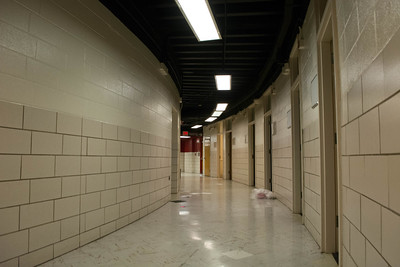Detailed community college enrollment data are coming in, and they show a hard-to-miss pattern. At most community colleges, enrollment is down, attributed to COVID-19. But the numbers tell a different story.
For example, in San Diego County, community college enrollment declined by 12%, compared to 2019, the last full academic year prior to the pandemic. Numerically, that amounts to a loss of 30,000 students. More interesting is the explanation of exactly who these schools are missing.
Enrollment by students who are Black, Pacific Islander, Asian, or Hispanic/Latino declined by double digits during the pandemic. Also disappearing in large numbers were first-generation students; disabled students; low-income students; student parents and older students. (Enrollment by people over the age of fifty is down by half.)
Students from marginalized groups were far less likely to re-enroll when in-person learning returned. The problem for community colleges, of course, is that there are a lot of marginalized groups these days. According to San Diego County community college enrollment figures, two out of three students who did not return to school were minorities. Worse, enrollment statistics show that less than 2% of recent high school graduates (of any race) who sat out the 2020 school year enrolled in fall semester classes.
Older students have also not returned. This may have something to do with higher rates of complications from COVID-19 among older people. It may also indicate other barriers, such as lack of computer skills, computer equipment or Internet service.
Unfortunately, these groups represent exactly the students that community colleges serve by design. While many community college administrators assumed that the economic upheaval that accompanied the pandemic would fill community college classrooms, physical community college classrooms remained empty for most of 2020 and a good portion of 2021.
Students are gone, community college enrollment challenges remain
The economy is now at or near full-employment, so the likelihood that people will flock to community colleges is slim. Even with the return of in-person learning, enrollments will continue to decline. Although some administrators attribute the decline to the birth rate, that is not the case. (The majority of the late Millennial and early Generation Z birth cohorts were as large as those seen during the peak of the post-World War II baby boom.)
Declining community college enrollment points to a sea change of sorts taking place in higher education. Increased competition from non-accredited education providers is drawing students out of traditional classrooms. Students are driven to search for alternatives to counter the enormous cost of a post-secondary education. They are also looking for maximum flexibility. And the market is providing those alternatives in large numbers. The current alternatives are both costly and inferior, but they are widely available.
We are on the advent of what is likely to be an historic evolution in higher education. Many institutions will not survive this. At this point, we need our highly paid community college administrators to unveil their survival strategies for the institution.
Whatever it is, it will not involve borrowing millions of dollars to build buildings the campus does not need. It will not involve diverting operating dollars to failed side-hustles and their resulting debts. And it will not involve hiring even more Vice Presidents to achieve what the first dozen have not accomplished.
Photo Credit: _ormolu , via Flickr












